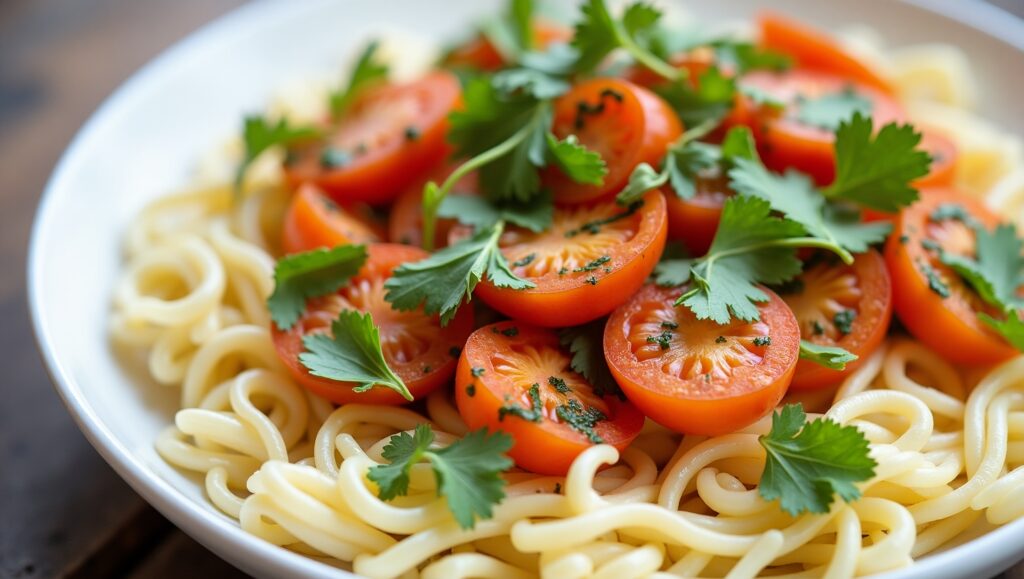How to Start Clean Eating on a Budget: 7 Simple Swaps You’ll Love

Eating healthy doesn’t have to break the bank. While many people believe that clean eating means spending a fortune on organic produce and specialty health foods, the truth is, you can enjoy a nutritious diet without overspending. By making smart, affordable food swaps, you can fuel your body with wholesome ingredients while staying within your budget.
This guide will show you how to start clean eating on a budget with seven simple swaps that are easy, delicious, and cost-effective.
1. Swap Packaged Snacks for Whole Foods
Packaged snacks like chips, crackers, and granola bars may be convenient, but they often contain added sugars, unhealthy fats, and artificial ingredients. Plus, they can be expensive! Instead, opt for whole-food snacks that offer better nutrition at a lower cost.
Budget-Friendly Swaps:
- Instead of: Chips → Try: Air-popped popcorn or homemade kale chips
- Instead of: Granola bars → Try: A handful of nuts and dried fruit
- Instead of: Store-bought hummus → Try: Homemade hummus made from canned chickpeas
Why It Works:
Whole foods are not only cheaper per serving, but they also keep you fuller longer, reducing unnecessary snacking and saving you money over time.
2. Swap Store-Bought Beverages for Homemade Drinks
Sugary sodas, flavored coffees, and even bottled teas can quickly drain your budget while adding unnecessary sugar and artificial ingredients to your diet.
Budget-Friendly Swaps:
- Instead of: Soda → Try: Infused water with fresh fruits and herbs
- Instead of: Bottled iced tea → Try: Homemade brewed tea with lemon
- Instead of: Fancy coffee drinks → Try: Homemade coffee with a splash of cinnamon or vanilla
Why It Works:
Not only will you save money by skipping store-bought drinks, but you’ll also cut out excess sugar and preservatives, which can improve your overall health.
3. Swap Expensive Meat Cuts for Affordable Protein Sources
While protein is essential for a balanced diet, high-quality meat can be pricey. Fortunately, there are plenty of affordable, protein-packed alternatives that are just as nutritious.
Budget-Friendly Swaps:
- Instead of: Ribeye steak → Try: Chicken thighs or ground turkey
- Instead of: Salmon fillets → Try: Canned tuna or sardines
- Instead of: Processed deli meats → Try: Hard-boiled eggs or beans
Why It Works:
Cheaper protein sources like eggs, beans, and canned fish provide excellent nutrition without the premium price tag.
4. Swap Pre-Packaged Meals for Home-Cooked Recipes
Pre-packaged and frozen meals may seem convenient, but they often contain preservatives, unhealthy fats, and excessive sodium. Cooking at home can save you a significant amount of money while giving you control over ingredients.
Budget-Friendly Swaps:
- Instead of: Frozen dinners → Try: Batch cooking meals like stir-fries or stews
- Instead of: Instant oatmeal packets → Try: Bulk oats with cinnamon and honey
- Instead of: Canned soups → Try: Homemade soups using affordable ingredients
Why It Works:
Cooking in bulk allows you to meal prep, reducing food waste and saving money on last-minute takeout.

5. Swap White Flour for Whole-Grain Alternatives
Refined white flour lacks fiber and essential nutrients. Whole-grain options are not only healthier but also more filling, meaning you eat less while getting more nutrients.
Budget-Friendly Swaps:
- Instead of: White bread → Try: Whole-wheat or sprouted grain bread
- Instead of: White rice → Try: Brown rice or quinoa
- Instead of: Regular pasta → Try: Whole-wheat or lentil pasta
Why It Works:
Whole grains provide longer-lasting energy, making them a smarter choice for both your wallet and your health.
6. Swap Fresh Produce for Seasonal or Frozen Options
Fresh produce is essential for clean eating, but out-of-season fruits and vegetables can be expensive. Instead, choose seasonal or frozen options to get the most nutritional value for your money.
Budget-Friendly Swaps:
- Instead of: Fresh berries in winter → Try: Frozen berries
- Instead of: Imported avocados → Try: Local in-season produce
- Instead of: Bagged salad mixes → Try: Whole lettuce heads, which are cheaper and last longer
Why It Works:
Frozen fruits and vegetables are often picked at peak ripeness and retain their nutrients, making them a budget-friendly alternative to fresh produce.
7. Swap Expensive Superfoods for Affordable Nutrient-Rich Foods
Trendy superfoods like goji berries and chia seeds can be expensive, but there are plenty of affordable alternatives that offer similar health benefits.
Budget-Friendly Swaps:
- Instead of: Chia seeds → Try: Flaxseeds
- Instead of: Goji berries → Try: Raisins or blueberries
- Instead of: Quinoa → Try: Brown rice or lentils
Why It Works:
Many everyday foods provide the same vitamins and minerals as high-priced superfoods without the hefty price tag.
Final Tips for Clean Eating on a Budget
Beyond making these swaps, here are a few additional tips to keep your grocery bill low while eating clean:
- Buy in Bulk: Grains, beans, and nuts are often cheaper when purchased in bulk.
- Plan Your Meals: Meal planning helps reduce food waste and prevents impulse purchases.
- Use Coupons and Discounts: Take advantage of store sales and digital coupons.
- Grow Your Own Herbs and Vegetables: Even a small herb garden can save you money over time.
- Cook Once, Eat Twice: Batch cooking saves time and ensures you have healthy meals ready to go.
Clean eating on a budget is absolutely possible with the right approach. By making these seven simple swaps, you can enjoy a nutrient-rich diet while keeping your food expenses low. Start by swapping out expensive, processed foods for whole, budget-friendly alternatives, and you’ll soon see the benefits—not just in your health, but in your wallet, too!
Ready to get started? Pick one swap today and make a small change toward a healthier, budget-friendly lifestyle!







